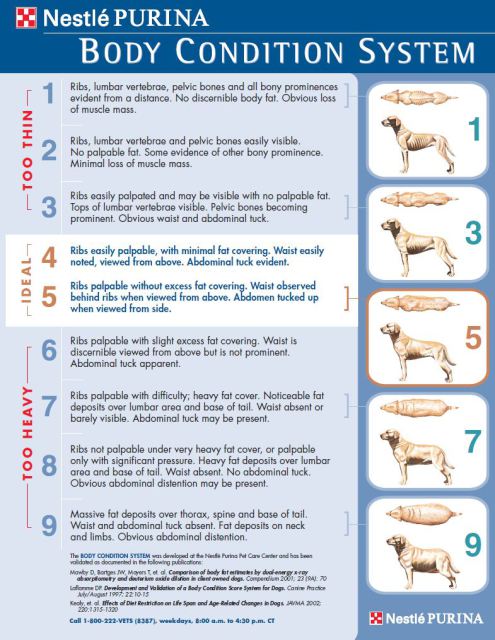There are several causes of obesity, but it is most often caused by an imbalance between the energy intake and caloric expenditure. Obesity also becomes more common in the geriatric population along with a normal decrease in a dog’s ability to exercise. Unhealthy eating habits, such as high-calorie foods and frequent treats can also bring on this condition.It can also be caused by medical conditions such as hypothyroidism, insulinoma, or hyperadrenocorticism, or even as a side-effect of a particular medication (i.e. prednisone).
Another recent study published on Preventive Veterinary Medicine looked at the impact of canine obesity on health-related quality of life (HRQL). The authors found that overweight and obese dogs have a reduced HRQL on 2 out of 4 domains (energetic/enthusiastic and active comfortable), and that differences in HRQL were also significant between different Body Condition Scores (BCS). Another study has looked at gait-related variables differences between lean and obese dogs at a trot. They concluded that specific changes in gait related to canine obesity may cause greater compressive forces within joints and could influence the development of osteoarthritis.
How do we assess a dog’s ideal weight considering different breeds and sizes? The BCS system was developed and validated as a reliable way to visually score a dog’s body condition. It is a visual scale that often works better than simply looking at your pet’s body weight. It can be graded between 1-9 or 1-5, depending on which scale you use. However, this chart can help you compare the scores between the 2 different scales. On a scale of 1-9 the ideal score is between 4-5, whereas on the scale 1-5 an ideal score would be 3.
The chart above should be used not only to score the patient’s BCS, but also to educate pet owners on ideal body weight. It is extremely important for the pet owner to be an active participant to increase compliance and improve the chances of success with a weight loss program.
A successful weight loss program should include both dietary changes and a safe exercise program, and both of these aspects should be done based on recommendation from your veterinarian and/or canine rehab professional.

[…] is an issue not only with humans but with household pets as well. I have discussed some of it in a previous post already, but the Association of Pet Obesity Prevention has estimated that as many as 52.5% of dogs […]